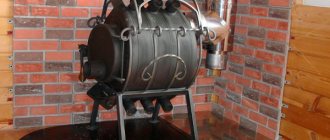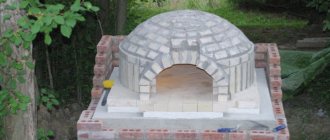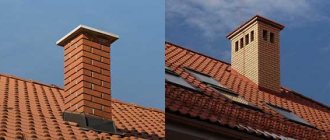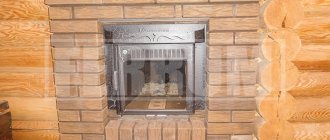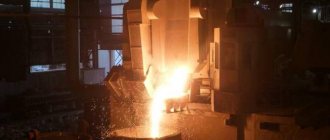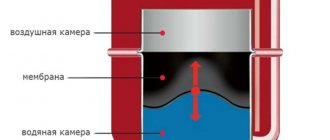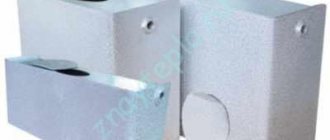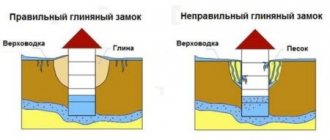Heating to high temperatures is a necessary component of many technologies that are used in home creativity, commercial activities and industrial production. Factory heating devices are highly efficient and, accordingly, have a price that not everyone can afford. A do-it-yourself muffle furnace for hardening metal can be assembled at minimal cost with excellent performance characteristics. To achieve the desired result, you should familiarize yourself with the device, operating principle and possible options for assembling a 1000 degree oven with your own hands.
What is a muffle furnace
A muffle furnace is a heating device designed to heat something to a given temperature.
A muffle furnace is a thermal device designed to heat materials to a given temperature. It consists of a heating chamber and a capsule (muffle) into which the object being processed is placed.
The scope of application of the devices is quite extensive:
- Laboratory analysis. The properties of many minerals appear at high temperatures.
- Blacksmith craft. Heating of workpieces while maintaining their shape and the absence of scale.
- Hardening of metal. Heat treatment changes the crystal structure, increasing strength and rigidity.
- Fuse. Isolation of the required substance from heterogeneous raw materials. This is how ingots of aluminum, gold and silver are obtained.
- Annealing. Helps achieve a given microstructure when creating parts from several components.
- Burning. Giving objects the necessary properties, such as hardness, presentability, resistance to moisture and chemicals.
- Heat treatment. Removing water, acid, oils, and other liquids from a substance to ensure complete drying.
- Vacation. Removing internal stresses after melting or hardening, achieving plasticity.
- Ashing. Removing foreign impurities by burning them. Determination of the presence of minerals in the alloy under study.
Using the functions of the devices allows you to obtain beautiful ceramics, souvenirs, and unique metal products.
Types of muffle furnaces
Gas muffle furnace
Heating devices differ in several indicators, which does not particularly affect their performance characteristics.
Among specialists, a classification into certain categories is accepted.
Energy Source:
- electricity;
- natural gas;
- coking coal;
- firewood.
Content protection type:
- in the air (mechanical only);
- gas environment (argon, helium, nitrogen);
- vacuum.
Housing design (loading method):
- vertical;
- horizontal;
- detachable (bell-type).
Heating level:
- moderate;
- average;
- high;
- ultrahigh.
There is a gradation based on structural, refractory and electrically conductive materials used in the production of stoves.
Types of muffle furnaces
There are several classifications of furnaces, since in certain areas some factors are decisive and others are not. These factors include the following characteristics:
- Heating type.
- Purpose.
- Type of construction.
- Protective environment.
- Mass of material.
- Volume of the muffle chamber.
- Heating temperature.
Based on the type of heating, muffle furnaces are divided into gas and electric. Electric options have practically replaced gas devices, as they are considered more practical. In addition, the specific heat of combustion of gas is limited, and high temperatures can be achieved using electrical appliances.
According to their purpose, muffle furnaces are divided into laboratory (mobile devices for scientific research), industrial (stationary devices installed at industrial enterprises), jewelry (used for firing ceramics or melting precious metals), and educational.
The division of furnaces by type of design is based on their functionality and variations in the methods of loading material. There are furnaces with vertical or horizontal loading, tubular furnaces used for checking thermocouples, as well as bell-type furnaces intended for firing large parts.
In a bell-type furnace, the part is placed on a separate hearth, made in the form of a pallet. From above, like a cap, it is covered with a muffle equipped with heating elements.
The simplest type in design is chamber ovens. One of the walls of the chamber is a door through which material is loaded and unloaded. The heating elements are located on the remaining walls in special grooves. Shaft or pot stoves are essentially similar to inverted bell stoves. The material is loaded into the recess of the muffle and covered with a flat lid on top. The most complex are tunnel kilns. They are equipped with a conveyor or integrated into a conveyor.
View this post on Instagram
Publication from Kovaleva Natalia (@kovaleva.gallery)
The temperature regime in a muffle furnace provokes undesirable chemical reactions on the surface of the material being processed. For this purpose, the parts are fired in a protective environment. The design of the furnace depends on the type of environment. Air furnaces are the simplest in design. In them, heating occurs in atmospheric air. Furnaces with gas protection allow heating in an environment of argon, hydrogen, helium and other gases. There are also vacuum ovens. In them, the part is heated in a vacuum.
In some cases, it is advisable to classify furnaces according to their characteristics. The most important characteristic is the volume of the muffle. Homemade or factory-made stoves differ in volume, which can vary from 1 to 100 liters. Typically, the volume is selected when designing a furnace, taking into account the area of its future application. Another important characteristic is the power of the furnace. It is typical for both electric heaters and gas furnaces. When purchasing or manufacturing a muffle furnace, it is important to consider the type of power supply, that is, the device is connected to a single-phase or three-phase circuit.
Muffle furnace design
For all their versatility, muffle furnaces have a relatively simple design. The peculiarity of the devices is the use of special components that can withstand temperatures up to 2000ºС.
The products consist of the following parts:
- Frame. The shape and size are determined by the volume of tasks assigned to the device. It is mandatory to install a valve to bleed gases released during the processing process. The body can be metal or made of modern polymers.
- A heating element. This could be a coal or wood stove, TEN, or gas burner.
- Internal lining. The walls are covered with ceramic plates, and in artisanal conditions with fireclay bricks.
- Door. There are various models, from the simplest ones with a handle to modern ones, which use a lever system that eliminates contact with hot parts.
- Communications. Depending on the type of product, this is a power cable, a high-pressure cylinder and hose, or a mechanical blower.
- Muffle. Chemical ceramic capsule of stationary or replaceable type.
- Controls. The devices can be equipped with a light and sound alarm, an interface for communication with a computer, a recording device, and a thermostat-programmer.
Depending on the production cycle, the furnaces are turned on for a certain period of time or operate continuously with periodic replacement of filled muffles.
Laboratory muffle furnace
The buffer mechanism is used to perform laboratory tests, research, roasting, piercing and a large number of other works. In order to operate in the presence of aggressive components, numerous manufacturers are ready to provide ovens with a personalized exhaust concept. Before calling and choosing such a mechanism, you should decide on its type (for the laboratory or for industrial purposes) and select the maximum required heating temperature in the middle of the working space. In addition, due to the variety of multifunctional capabilities and power, laboratory furnaces of both Russian and German, Korean or French production are presented on the market.
The most famous company that produces muffle furnaces is the German company Thermconcept, whose direct representatives are several companies in the Russian Federation. A very large-scale selection can satisfy the needs of any laboratory, since the variety of required working chamber sizes ranges from 1 to 2000 liters, the operating temperature ranges from 900 to 1800 degrees.
Since ancient times, a definition has arisen that a muffle furnace is a mechanism that heats a source isolated from fuel and absolutely all combustion products. Due to the development of pyrogenic thermal-electric heating parts and the rapid formation of electrification, similar installations everywhere began to be produced electrically, due to the most comfortable and economically profitable application.
Today, this terminology refers to a box-type device with a front-loading method or a pyrogenic furnace for performing high-temperature processes associated with glass agglomeration, enamel formation, ceramic firing, and other things. The internal working chamber of this unit is completely sealed on all sides, which makes it possible to withstand elevated temperatures for a long time. The internal volume can be made of heat-resistant non-corrosive steel, some types of ceramics or special MKRV fiber. Heating components, which can be of an open or closed type, heat samples of a substance that is placed in the middle of the chamber.
In addition, laboratory muffle furnaces are used in many educational and experimental organizations, for example, to establish the fire resistance of a part of the element under study. Electronic thermal controllers make it possible to operate the stove in up to 100 steps, from linear temperature changes to sudden temperature changes that are used in the sintering process. In addition, advances in the study of high-thermal substances, such as molybdenum and silicon compounds, make it possible to increase temperatures to 1800 degrees, which has a good effect on labor-intensive and complex processes.
The wording “muffle furnace”, in addition, can be a tool for characterizing another machine – a tubular furnace. This furnace is created on the basis of the same principles as the muffle furnace, but it has the shape of an elongated tube with a hollow middle, where, in fact, samples are heated for analysis.
Both types of stoves described above are heated through the use of heating components, and thermo-convection is used as an additional option. Consequently, all combustion products do not participate in maintaining the required temperature, and thermal control is carried out only thanks to insulating materials.
Types and conditions of processing of raw materials
Muffle furnace for hardening metal
In the process of processing workpieces, various processing methods can be used in terms of time and degree of heating, duration and cooling methods. One or another method of protecting workpieces can also be used.
The material processing technology used is as follows:
- Ceramics. Open, 600ºС.
- Porcelain. Open, 800ºС.
- Faience. Open, 1000ºС.
- Majolica. Open, 1200ºС.
- Hardening of cutting metal products. Argon 800ºС.
- Melting of non-ferrous metals. Argon 800-1200ºС.
Deviation from the instructions leads to deterioration in the quality of the finished product or damage to the loaded substance.
Preparing for work
Any work must begin with a certain preparatory stage. Even if an action plan has been approved, it is necessary to prepare tools and materials, otherwise there may be long interruptions in the work that will negatively affect the performance of the craftsman and the quality of the constructed structure.
Before actual construction begins, you will have to immediately prepare a grinder for cutting sheet metal and processing fireclay bricks. The circles for the grinder must be appropriate. The list will be supplemented by electric welding with consumables and other plumbing tools for everyday use.
Good to know: How a convection oven is used to heat a house, what types it comes in
Materials include nichrome or fechral wire, basalt wool, fireclay brick and sheet iron with a thickness of at least 2 mm. Depending on how the structure is made, some tools or materials may not be needed, and additional ones will be acquired during the process.
Homemade stove
Making a homemade muffle furnace
To make a stove you will need a grinder. A
do-it-yourself muffle furnace is made using the following tools:
- screwdriver;
- roulette;
- hammer;
- level;
- soldering iron;
- pliers;
- Bulgarian;
- electric drill.
After preparing the necessary equipment, you need to make a drawing and, based on it, start preparing the components.
For a homemade housing, you can use faulty or old household appliances that have been idle for a long time - a microwave, oven, freezer. All fillers that can melt and burn under high heat must be removed from the casing. If there are no such objects at hand, the body is made independently. To do this, a steel sheet with a thickness of at least 2 mm is taken and welded into a rectangular or round structure. It is advisable to use a gas cylinder or a steel pipe with thick walls as a ready-made template. To protect against corrosion and give the product a presentable appearance, it must be coated with fire-resistant paint.
The stove is made from fireclay clay mixed with sand and asbestos
Another way to make a stove is to model it from a mixture of fireclay clay, sand and fluffed asbestos. A wax mold is first made, on which protrusions for the legs are made. A mixture of plasticine consistency is evenly distributed over the pattern, then dried at room temperature for two weeks. Then the wax is melted with a hairdryer, and the mold is calcined in coals for 6 hours.
If there is a transformer substation nearby, the task is greatly simplified. There, for a reasonable fee or for nothing, you can get tubes from fuse links. The products are made of a durable substance and are designed to withstand extreme heat and temperature changes. All that remains for the master is to work a little with a grinder and fireclay clay.
The next item will be the installation of the heating element and thermostat (control unit sensors). Two gas burners or electrical elements are mounted on the furnace body. The burners are installed from below and from above. Electric heaters are fixed depending on their configuration. The wire is wound in a spiral, TENs are placed on the sides, and if heat of 1500ºC or higher is needed, then on the floor and vault. Ground must be provided to prevent electric shock to the employee. The heaters are then covered with a steel casing, in which a hole is made for the air valve.
Thermal insulation is applied to the outer casing as tightly as possible to its surface. The best option today is considered to be basalt wool in rolls. To close the camera securely enough, a layer 20 mm thick is enough. The thermal insulation can be secured with aluminum tape or copper wire wound in frequent turns. The finished structure is placed in the housing if such a stove model is selected.
The penultimate step before installing the electronics is making the cover.
Process sequence:
- Fitting, fastening and adjusting hinges. Screw or wedge locking devices are used.
- Fireclay bricks are taken and cut to size. The edges are ground down to ensure the lid closes.
- A solution is prepared from clay, sand and cement in a ratio of 1:3:1. It is applied to the door, the brick is pressed tightly, and pressure is placed on top.
- After drying, the cover is hung in place and the joints are sealed. Heat-resistant silicone is used, applied around the perimeter of the sash.
You can use the device after 2-3 hours.
The simplest option for arranging a muffle furnace for firing ceramics is a combination of a powerful electric stove and medical ceramics. Fireclay should be placed under the vessel to ensure even distribution of heat. The power is regulated by the standard tile device.
Small muffle furnace made from affordable materials
Hello everyone, in this instruction we will look at how to make a simple miniature muffle furnace from scrap materials. It can melt aluminum, and also harden or temper steel, say, to make a knife. The author uses a stove to heat car spark plugs. The resulting ceramics can be used to make excellent nozzles for a sandblasting machine.
Despite its small size, the oven turned out to be quite powerful; it uses a 3 kW heating element, which heats the oven up to 900 degrees Celsius. If the project interests you, I suggest you study it in more detail.
Materials and tools used by the author:
List of materials:
- two cans of paint or canned food of suitable sizes; — 3 kW spiral from an electric stove; - alabaster (construction plaster); — two bolts with nuts (for contacts); - steel wire (for legs); - wires; — heat-resistant paint; — radio components for the manufacture of a power regulator; - junction box or other housing for the power regulator.
List of tools:
- hacksaw for metal; - grinder; - container for stirring gypsum; - soldering iron; - vice; - pliers.
Furnace manufacturing process:
Step one. Casting the inner part
The furnace is made gradually, first the inner part is cast, and then the outer part. To make these parts we will need two paint cans or similar. One jar will be smaller and the other will be larger.
After installing the pipe, pour the plaster into the jar and wait for it to dry. Well, then you need to remove the can; to do this, you can easily cut it with a grinder or other tool. But pulling out the inner pipe may be more difficult; the author had to cut it lengthwise from the inside with a hacksaw. The author held the pipe so firmly that he even accidentally broke off a piece of plaster, but this did not affect the design of the stove.
Step two. Spiral
In the previously made part, a groove needs to be machined in a circle; this is where we will lay the spiral. First we mark everything, and then we go through it with a file or other available tool.
We take a jar of larger diameter and cast the bottom from plaster. Then we drill holes for the contacts, which will be two screws with nuts. We cut off the metal around the holes to prevent short circuits.
We install the contacts and the central part with the spiral into a jar and fill it with plaster. Let's leave the whole thing to dry. Instead of gypsum, you can use special heat-resistant compounds.
Step four. Power regulator
We make a power regulator for the stove; it will allow you to adjust the desired temperature, as well as smoothly turn off the stove, which will extend its service life. We assemble the regulator in accordance with the diagram. And to hide all the elements, the author used an electrical junction box. Everything turned out neat and safe. We move the regulator away from the stove to a safe distance so that it does not overheat.
Step five. Finishing touches
Finally, we make legs for the stove; for this you can use steel wire. The author soldered the legs and secured them by drilling shallow holes in the body. Everything turned out neat and beautiful.
Also make a plug for the stove; it can be cast from plaster. Finally, we paint the body with heat-resistant paint to make everything look great.
Step six.
Tests We start the oven, first set a low temperature so that the oven warms up smoothly. At first, steam or even smoke may come from it, this is normal, everything that should burn will burn, then the oven will work normally. Well, then we gradually turn the oven up to full power, after 30 minutes everything inside glows red.
We send the candle inside and heat it up, the author’s one lit up to a red glow, and the central rod came out. Now, holding the spark plug in a vice, you can use pliers to pull out the central rod.
That's all, the project is over, the oven showed itself well, I hope you liked the homemade product and you will find a use for it. Good luck and creative inspiration if you decide to do this again. Don't forget to share your ideas and crafts with us.
SourceBecome the author of the site, publish your own articles, descriptions of homemade products and pay for the text. Read more here.
Safety precautions
The handles are made of dielectric plastic.
The muffle furnace is a potentially dangerous device that requires compliance with the following safety measures:
- the turns should not touch each other, otherwise a short circuit will occur;
- for putty you can use clay or heat-resistant silicone;
- handles must be made of dielectric plastic.
When working with the stove, you must use effective ventilation.
